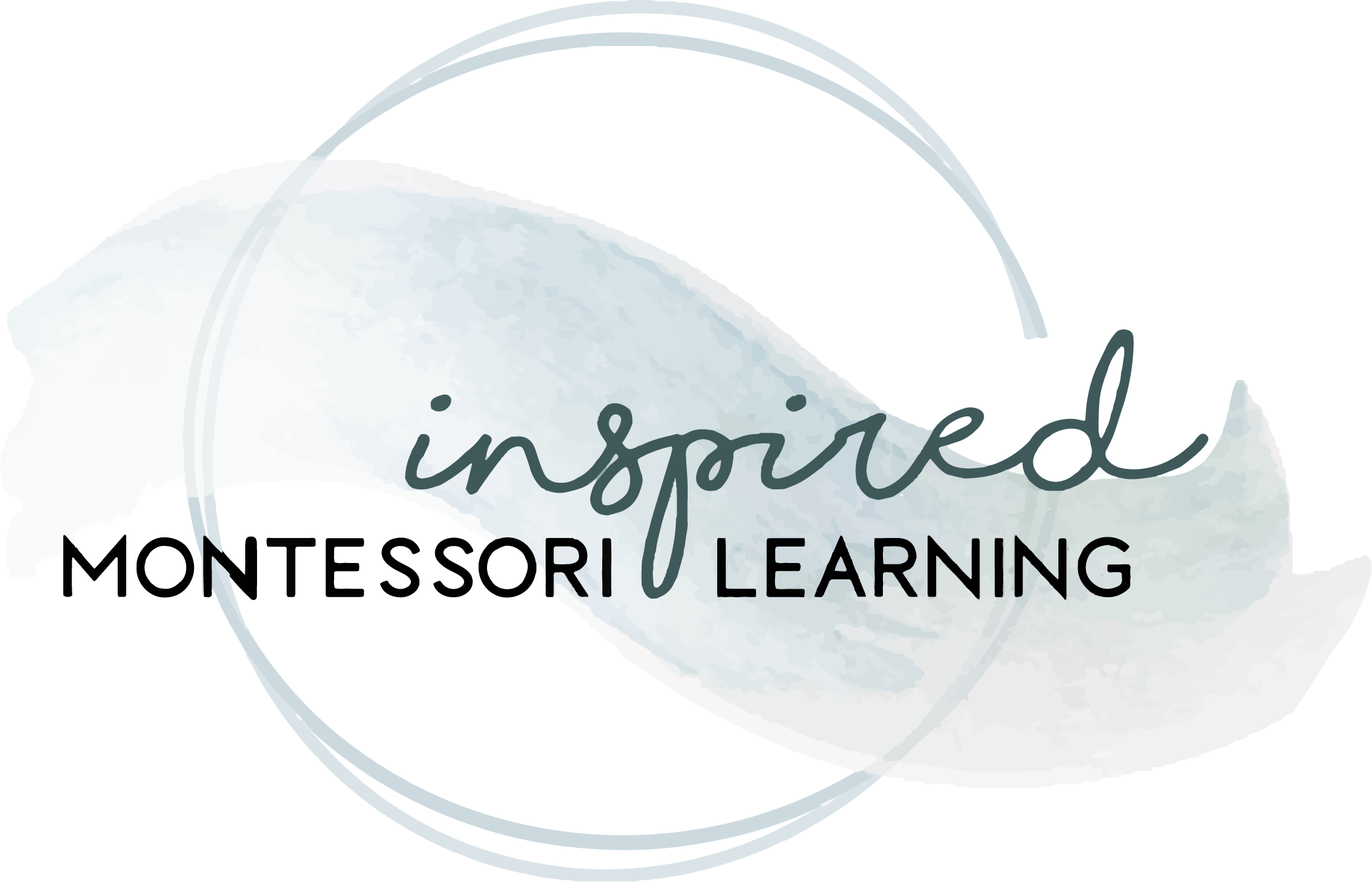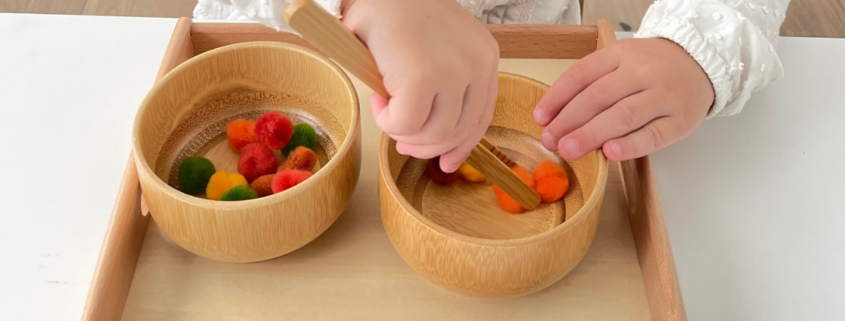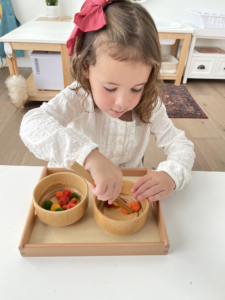The Importance of the Lesson
The Lesson
A large part of a Montessori environment revolves around “The Lesson”. Giving lessons whether verbally or silently becomes the foundation for hands-on independent learning in a Montessori home or school environment. You truly cannot have success in your Montessori home without it.
Maria Montessori said, “We must help the child to act for himself, will for himself, think for himself; this is the art of those who aspire to serve the spirit.”
But how do we help with this?
Allowing for Independence
Montessori’s whole purpose in developing her method of education was to help each individual child discover a joy of learning. This joy comes through independence. Independent learning is best facilitated through lesson presentations which concludes with opportunities for child led exploration.
By presenting lessons, we help to facilitate independence in young children allowing for opportunities that spark curiosity and development in their academic and social learning. This becomes the joyful work of the child.
Why are Lessons Important?
Many times we give lessons for safety reasons. Sometimes we give lessons so children know how to perform a routine, some lessons are about our place here on the earth and others might be more academic in nature.
All lessons begin with an invitation and are delivered with enthusiasm, attention to detail and respect. By following this pattern, we hope to draw a child in so that they may begin to look for the parts of the lesson that resonate with them.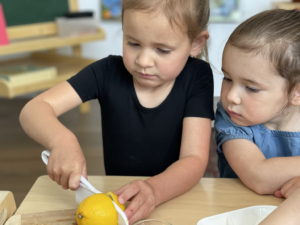
Formal and informal lessons are given in a Montessori home or school to guide a child in foundational learning. They are designed to arouse excitement. The enthusiasm that we have for new lessons often leads to curiosity, as a child works with a material, idea or routine over and over again.
We know children will gain their own knowledge drawing their own conclusions from materials and works we or others share with them. But first, we must show them the steps for completing the work. This doesn’t mean that they cannot use the material in other creative ways, but by showing how to use a material, children are given and interest point as well as a starting point.
Lessons for Everything
There is no end to when and where you can give lessons. Here is a brief list:
- Practical Life Work: These include any and all things that are part of daily family life. ie, folding laundry, cooking/baking, putting toys away, yard work, table setting, self care, etc.
- Shelf Work: Depending on the age of your child this could look like open ended toys or more academics such as language, math, social science or thematic activities.
- Grace and Courtesy: Manners, grace and love that we give to each other through genuinely embracing gratitude and service. This would also include any kind of daily family rules, routines and boundaries especially when related to safety. Practice Grace and Courtesy in your home daily. So much of this type of learning comes through example and are some of the most valuable lessons we can give our child.
How to Give a Lesson
In our school, we give more formal lessons but in your home a mix of formal and informal lessons works best. You can use these guidelines when preparing and giving lessons.
Lesson Guidelines:
Guide Gently
Remember to guide gently when giving lessons. Don’t force a lesson. Wait for a child to show interest. If your child seems uninterested in a particular lesson, try something else and come back to that material at a later time.
Honor Interests
Lessons generally work really well when your child has shown an interest in something but you can also create an interest point for your child by how you present something. Choosing things to prepare and present works really well when it is based on observations that you have made of your child surrounding their interests, needs and ability at the time.
Be Proactive
Giving lessons before a child explores with a material or before they have crossed a boundary is much better than trying to correct a child in the middle of what they are doing. In other words, be proactive with lessons. When you want to teach a child how to safely walk across a street, do it before you cross the street and he/she does it unsafely. That way you can say, “Remember what we talked about before we left home? Let’s try to do it that way.” This keeps more of a neutral field for your child, especially younger children so they don’t get defensive.
Allow for Uninterrupted Practice Time
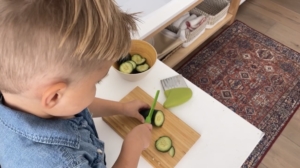
Don’t interrupt a child’s work unless of course they are doing something dangerous.
Once a lesson has been presented, allow them the time to practice and explore with the material without trying to guide them or show them something they are doing incorrectly.
If you see a child is struggling to use a material, after a substantial time of observing, you can gently ask if they would like help or you can ask if they would like another lesson. But sometimes just simply take note to show them that work again another time.
Sit Where?
When giving shelf lessons to a child, always sit on their dominant side. Ask them to watch as you present the steps of the lesson. Restore the work and invite your child to have a turn.
Complete the Cycle
Once your child has finished a work, have them return it to the shelf or clean up. We call this restoring the work.
If your child doesn’t want to clean up, remember to teach this as a boundary with consistency, love and kindness.
If your child refuses to clean up, simply say, “Would you like me to help you?” this will usually get them moving towards you as you do it together. But if they still refuse, very casually say, “I’ll do it this time and maybe next time you’ll want to do it yourself.” We like to use this technique for a few reasons but mainly it signals to a child that you are not trying to control them. It is important to allow them to make choices and to be able to stay neutral even when your child isn’t doing exactly what you would like.
These simple words and actions will take them out of fight or flight mode and will put them in a place of trust. They begin to learn they can trust you with their big feelings and it magically makes them more cooperative.
As a final thought, keep in mind that the “Lesson” is designed to allow a parent or teacher opportunities to inspire a child so that they begin to become critical thinkers, compassionate citizens, independent learners and joyful participants. We hope you find joy in the journey as well. It truly is a beautiful thing!
